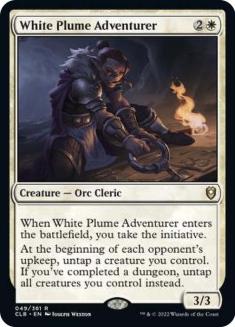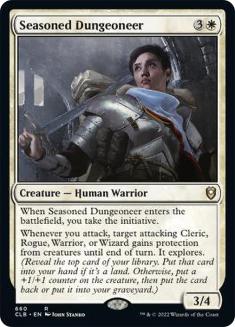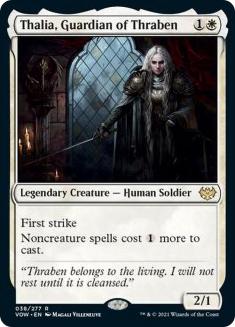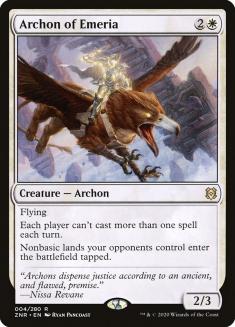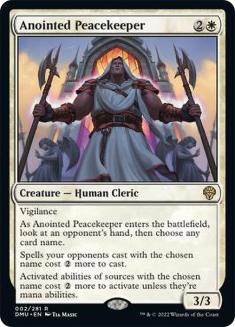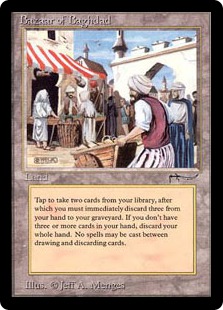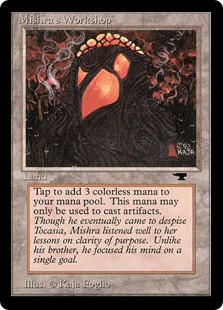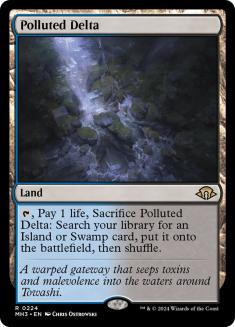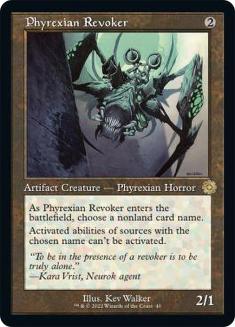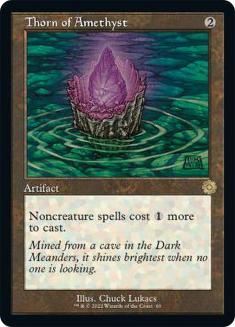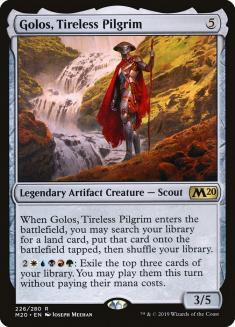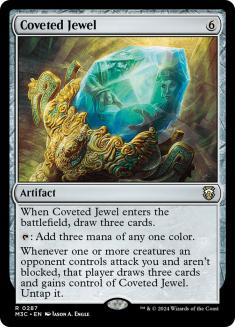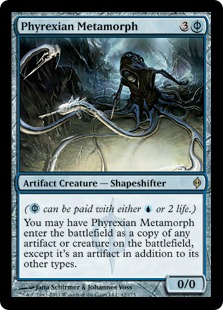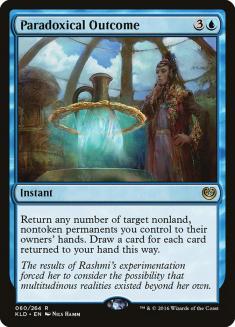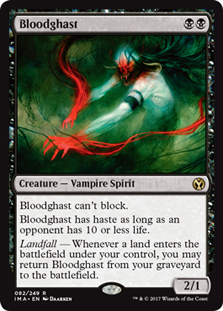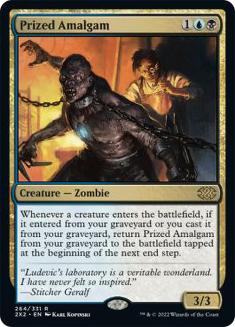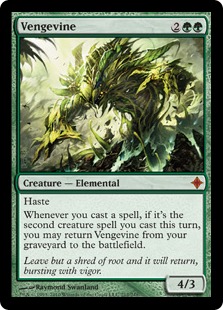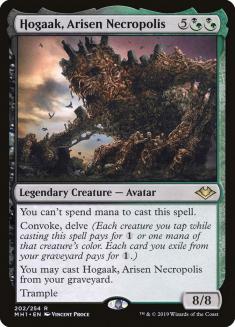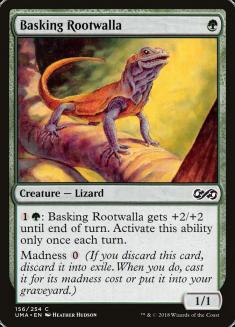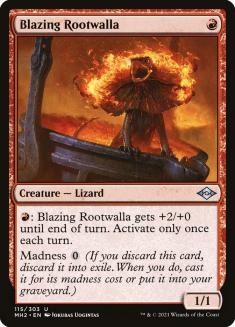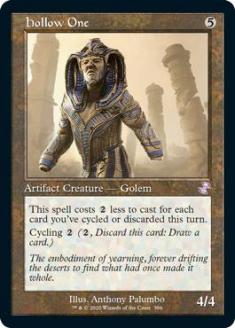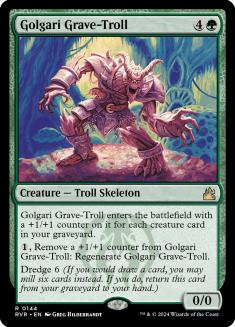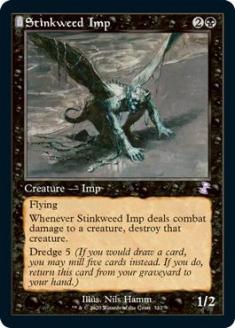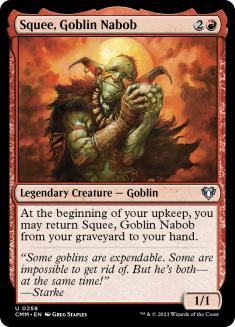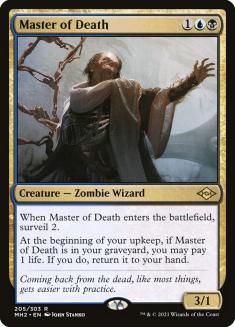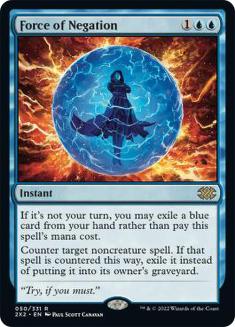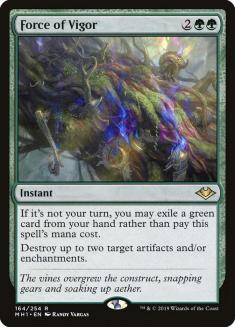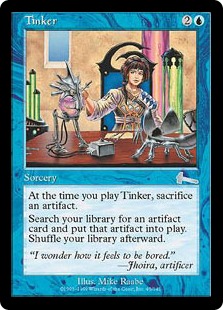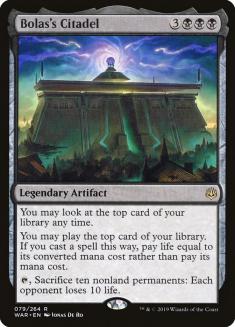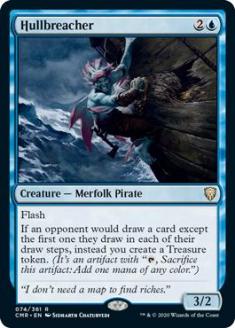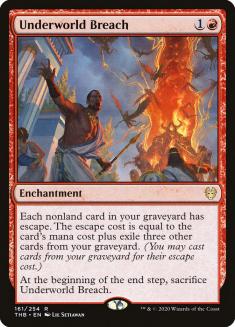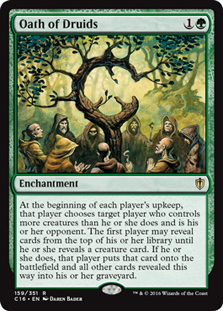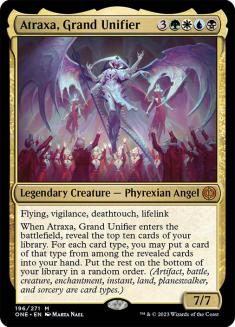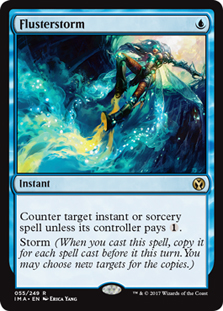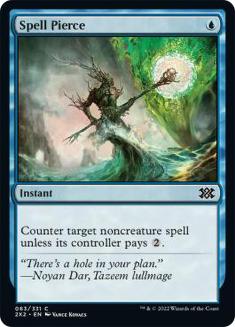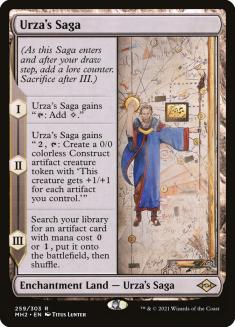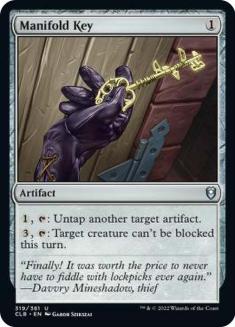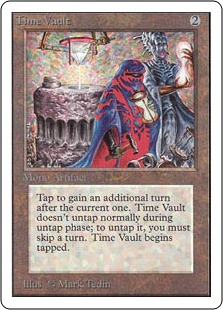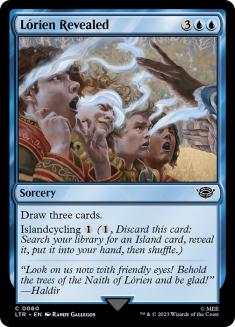Vintage is generally seen as the Cadillac of Magic: The Gathering – an old-school luxury that only a select few get to enjoy. For everyone else, Vintage is a mythical creature that exists only in fairytales – an unchained, no holds barred version of Magic full of Turn 1 wins and broken nonsense.
It is all that, but so much more too! There’s no better monument to Magic’s history. When I was getting into Magic in the mid-2000s, I devoured the reports from Star City Games’ Power 9 Series. Even then, the likes of Black Lotus and Ancestral Recall were worth enough to be eye-catching prizes for the winners and a big barrier to entry for everyone else. Now, the idea of ‘buying into Vintage’ seems laughable unless you have had well-loved Moxen safely stowed in a binder for decades.
Magic Online not only broke that barrier, but allowed Vintage communities across the world to meet and battle each other. The Japanese players who stay up late for the Saturday Vintage Challenge get to face any brave, bleary-eyed Americans in a more hospitable time zone on Sunday, with decks that cost less online than many Modern decks. It’s barely a joke to say that the best Vintage players in the world are lawyers in their late 30s and zoomers who sleep on the couch on tournament trips to save money; it’s much easier to get a taste of Vintage now!
Whatever your style, you can find the most pushed and powerful example of that strategy in Vintage. Let’s take a tour of its greatest hits.
Creatures (27)
- 4 Chancellor of the Annex
- 4 Thalia, Guardian of Thraben
- 4 Archon of Emeria
- 3 Solitude
- 4 White Plume Adventurer
- 4 Seasoned Dungeoneer
- 4 Anointed Peacekeeper
Lands (15)
Spells (18)

The Initiative mechanic broke out of its casual, multiplayer containment zone to terrorize every format it landed in. White Plume Adventurer is already banned in Legacy and earned enough ill-will to get itself booted from the Magic Online Vintage Cube – another format that is meant to be a showdown between the game’s strongest cards!
The white aggro deck using disruption to keep the unfair decks in line is a classic strategy in Vintage, albeit one with mixed results. An issue that plagued these decks was that your creatures just weren’t that impressive in combat, giving the combo decks time to wriggle out of that squeeze and letting other creature decks beat you on the board. It’s not just Tinker you had to worry about – it’s Tarmogoyf!
This new party changed all that. An early White Plume Adventurer or Seasoned Dungeoneer presents a serious threat that leaves an ongoing problem behind if the opponent can’t seize the initiative themselves. In anything resembling ‘fair’ Magic, these are great cards to pin your hopes on.
You have to make it a fair game first and that’s where the other white creatures shine. Thalia has served that role admirably for over a decade and Anointed Peacekeeper pops up in Pioneer and elsewhere occasionally but Archon of Emeria is the breakout star in Vintage. It’s easy to see how the spell restriction shines against combo decks but the other text is more relevant here than ever.
A glance at the pillars of the format illustrates this. A deck relying on Bazaar of Baghdad as its engine card or a stack of Mishra’s Workshops and Ancient Tombs to ramp out its threats will be slowed to a crawl when those enter tapped. The blue decks are highly reliant on using fetchlands to find dual lands – Archon turns that from immediate fixing to a three-turn process. Almost everyone uses Moxes and other fast mana to power out their key plays but Archon stops that – if you have a Turn 1 Archon on the play in the mirror and they don’t have Solitude, they won’t do anything relevant for a long time.
The hype around Mono-White Initiative has died down since its Eternal Weekend debut last year but it’s the most straightforward deck for anyone looking to taste the thrills Vintage offers.
Creatures (9)
Planeswalkers (1)
Lands (25)
Spells (25)

The Urza lands may rule other formats but Mishra’s Workshop has been a pillar of Vintage since the very beginning. The Vintage restricted list is full of cards framed for the crimes of Mishra’s Workshop and any new expensive artifact is weighed up with Workshop in mind. The One Ring is phenomenal at four mana – what if it effectively cost two?!
These decks use their abundance of fast mana to get these lock pieces or taxing effects into play as soon as possible and then break any symmetry on that tax. In the decades-long game of Workshop whac-a-mole, Thorn of Amethyst, Trinisphere, and Lodestone Golem were all restricted for being too good in this role.
Standard and Commander menace Golos finds an ideal playground in Vintage, where it is easy to cast on the cheap and has a whole new world of powerful lands to find. Karakas is a useful tool in its own right and lets you bounce and recast Golos every turn. The trio of Wasteland, Strip Mine, and Ghost Quarter tighten the screws on a struggling opponent or trade for other problematic lands like Bazaar of Baghdad. Urza’s Saga is the perfect finisher for an artifact-themed deck that can slot it seamlessly into its manabase.
This vast array of utility lands highlights one of the big selling points of this strategy – when you don’t need to care about coloured mana, you can make your lands do a lot more for you.
Creatures (4)
Planeswalkers (1)
Lands (14)
Spells (41)
- 1 Sensei's Divining Top
- 4 Grim Monolith
- 4 Force of Will
- 1 Mana Vault
- 1 Sol Ring
- 1 Time Walk
- 1 Ancestral Recall
- 1 Mana Crypt
- 1 Time Vault
- 1 Trinisphere
- 1 Tinker
- 1 Black Lotus
- 1 Mox Emerald
- 1 Mox Jet
- 1 Mox Pearl
- 1 Mox Ruby
- 1 Mox Sapphire
- 1 Repeal
- 1 Mindbreak Trap
- 3 Mox Opal
- 3 Paradoxical Outcome
- 3 Coveted Jewel
- 1 Manifold Key
- 1 Mystic Forge
- 1 Sea Gate Restoration
- 4 The One Ring

Mishra’s Workshop also powers one of the most bizarre and flashy combo decks you’ll find in any Magic format.
It’s easy to write off Coveted Jewel as an expensive Commander card but you get a lot back from that investment if it’s on sale. Phyrexian Metamorph copying Coveted Jewel is ‘free’ but also draws three cards, letting you chain these together to build towards a massive Paradoxical Outcome that also sweeps up the Moxes, Monoliths, and other fast mana that helped you do all this shockingly fast.
It’s rare to find a Workshop deck with enough blue cards for Force of Will – and frankly this still isn’t quite enough – but pairing the broken artifact mana with the best piece of interaction and the restricted blue cards is awfully compelling.
If that looks too normal for you, let me show you something bizarre.
Creatures (37)
- 4 Ichorid
- 1 Golgari Grave-Troll
- 4 Golgari Thug
- 4 Shambling Shell
- 4 Stinkweed Imp
- 4 Narcomoeba
- 4 Prized Amalgam
- 4 Hollow One
- 4 Silversmote Ghoul
- 4 Grief
Lands (4)
Spells (19)
- 4 Force of Will
- 4 Serum Powder
- 1 Chalice of the Void
- 1 Mental Misstep
- 3 Noxious Revival
- 4 Creeping Chill
- 2 Force of Negation
Sideboard

They don’t make them like Bazaar of Baghdad any more. The decks built around Bazaar of Baghdad so unlike anything else in Magic that you wonder if you’re still playing the same game. Winning without casting a spell is impressive, but how about winning without ever using mana?!
It doesn’t stop there. There aren’t just “Bazaar decks” the way the decks above are “Workshop decks.” The mainstream Bazaar decks are more reliant on their namesake card than any deck in history. If you don’t have Bazaar, you don’t play Magic (…or whatever game you’re pretending to play instead). You mulligan any hand without Bazaar; a hand with Bazaar as the only card is better than any seven cards without it. You’re effectively guaranteed to find one eventually (Serum Powder and the London Mulligan help your odds there too), but what else will you have to work with?
Let’s look at the weird cast of characters that makes this possible.
Enough free recursive creatures have been printed over the years that you can build a board from the graveyard alone.
Blazing Rootwalla joins its inspiration Basking Rootwalla as a way to turn discarding to your advantage, but Hollow One is what lets every Bazaar deck plow through extreme graveyard hate like Leyline of the Void. Some of the most frustrating losses to these decks occur when you have every other angle covered only to get stomped by multiple copies of Hollow One.
Guess who’s back (and back again, and again…) As the rest of the world figured out the hard way how dangerous the Dredge mechanic was, Vintage players saw immediately that Bazaar was the perfect enabler for those shenanigans. Dredge powered by Bazaar has been a fixture in Vintage for almost twenty years now.
Another variant of this deck uses Master of Death alongside Squee, Goblin Nabob to flip the ‘draw 2, discard 3’ equation in your favor. As a Dimir card that you can pick up on demand, Master of Death is the perfect card to toss to one of your many pitch spells.
All this is adorable but how do you beat the other nonsense that’s only possible in Vintage? The beauty of Bazaar is that not needing other lands lets you load up on free interaction and not caring about your card count lets you throw away other spells to them. The Modern Horizons Forces and Modern Horizons 2 Evoke Elementals let you present a formidable wall of free spells.
Deep Blue
Now we turn to the family of decks that made me fall in love with Vintage and go on a fantastic winning streak. The philosophy of the “big blue” decks can be summed up in one card (literally – they only let you play one copy, for good reason!).
Tinker may be the strongest single tactic in the entire format. Blunt objects like Sphinx of the Steel Wind or Portal to Phyrexia can shut the door against creature decks but Bolas’s Citadel offers a thrill unlike any other. In a format with this many free spells and the best ways to search for and manipulate cards, Citadel is sensationally powerful and the big Citadel turns deliver the high-octane excitement that makes Vintage so appealing. If you prefer things more predictable, Sensei’s Divining Top can flip itself on demand to be recast with Citadel, letting you draw any card you see for one life.
If it’s not Tinker, it’s something else ludicrously powerful. You have the fast mana that enables Tinker and lots of ways to sift through cards but you need more payoffs to find and more stuff to fill out your deck in general – when all of the best cards are restricted, it’s hard to count to sixty. This makes building these decks and playing with or against them an interesting challenge that’s inherently more varied than a deck that starts with a dozen four-ofs.
My lists from that run of Challenges show that you really can take your pick – you can borrow White Plume Adventurer from the Initiative decks, go for an Underworld Breach finish with Brain Freeze and Black Lotus that Modern players can only dream about, or ambush everything from Coveted Jewel to Bazaar of Baghdad to Ancestral Recall with Hullbreacher.
Fan favorite Oath of Druids is another perfect example. Some things have changed since 2004 – Atraxa, Grand Unifier is a big upgrade from Spirit of the Night and Akroma, Angel of Wrath – but the impossibility of Pyroblasting an Oath has not.
These threats have an odd dynamic with the other interaction often seen in these decks. Force of Will is the most universal answer in Vintage, but everything else only covers its own subset of threats. If one of these cards is especially popular, dodging it becomes a big selling point by itself – if you can’t Pyroblast or Force of Negation a White Plume Adventurer, what are you meant to do about it?
Urza’s Saga is a natural fit, generating multiple threats and giving you a trinket as powerful as Black Lotus on the way out while avoiding these stack wars entirely and letting you hold up mana in case one starts. Saga also gave Vintage classic Time Vault a new lease on life by offering easy access to Manifold Key for that infinite combo.
Speaking of cards that are good with Black Lotus (ok, that’s all of them, but indulge me here)…
Creatures (4)
Lands (18)
Spells (38)
- 1 Brainstorm
- 1 Mana Drain
- 4 Force of Will
- 1 Sol Ring
- 1 Demonic Tutor
- 1 Time Walk
- 1 Ancestral Recall
- 1 Daze
- 1 Merchant Scroll
- 1 Black Lotus
- 1 Mox Emerald
- 1 Mox Jet
- 1 Mox Pearl
- 1 Mox Ruby
- 1 Mox Sapphire
- 1 Repeal
- 4 Mishra's Bauble
- 2 Spell Pierce
- 1 Mental Misstep
- 1 Gitaxian Probe
- 2 Flusterstorm
- 1 Treasure Cruise
- 1 Dig Through Time
- 1 Fatal Push
- 2 Force of Negation
- 1 Soul-Guide Lantern
- 3 Lorien Revealed

The original Lurrus of the Dream-Den is in contention for best card of all time and holds the honour of being the only card banned in Vintage in decades (what would restricting it even do?). After being freed, it took a while to find its footing again, but a neutered Lurrus is still the cornerstone of the control decks that are all the rage right now.
The One Ring and Orcish Bowmasters are as impressive as advertised in Vintage but Lorien Revealed may be the most important part of this trip to Middle-earth, letting blue decks keep their more powerful blue cards when casting Force of Will or Force of Negation and making manabases more stable in a world of Wastelands and Strip Mine.
Creatures (6)
Planeswalkers (1)
Lands (15)
Spells (38)
- 1 Brainstorm
- 1 Vampiric Tutor
- 1 Mystical Tutor
- 1 Duress
- 4 Force of Will
- 1 Necropotence
- 1 Demonic Tutor
- 4 Doomsday
- 1 Time Walk
- 4 Dark Ritual
- 1 Ancestral Recall
- 1 Sleight of Hand
- 1 Gush
- 1 Demonic Consultation
- 1 Black Lotus
- 1 Mox Jet
- 1 Mox Sapphire
- 1 Ponder
- 4 Preordain
- 1 Mental Misstep
- 1 Gitaxian Probe
- 1 Flusterstorm
- 1 Treasure Cruise
- 1 Dig Through Time
- 1 Force of Negation
- 1 Dress Down
Sideboard

Doomsday is the distilled essence of Vintage Magic – strange, powerful, and intricate. Winning post-Doomsday takes less finesse now thanks to Thassa’s Oracle, and you don’t need some mad scientist to figure out ‘Mind’s Desire into the same Beacon of Destruction as the last card in your deck over and over’ any more, but working out the right pile to beat the answers your foe does or could have remains incredibly challenging at a high level. If you put the work in to master that, you are handsomely rewarded, as a strong Doomsday pilot is perhaps the scariest opponent in Vintage.
Lands (12)
Spells (48)
- 1 Sensei's Divining Top
- 1 Tendrils of Agony
- 1 Brainstorm
- 2 Cabal Ritual
- 1 Vampiric Tutor
- 1 Mystical Tutor
- 1 Yawgmoth's Will
- 4 Force of Will
- 1 Necropotence
- 1 Mana Vault
- 1 Sol Ring
- 1 Demonic Tutor
- 1 Time Walk
- 4 Dark Ritual
- 1 Ancestral Recall
- 1 Mana Crypt
- 1 Time Vault
- 1 Tinker
- 1 Black Lotus
- 1 Lotus Petal
- 1 Mox Emerald
- 1 Mox Jet
- 1 Mox Pearl
- 1 Mox Ruby
- 1 Mox Sapphire
- 1 Mental Misstep
- 1 Gitaxian Probe
- 4 Flusterstorm
- 1 Bolas's Citadel
- 1 Manifold Key
- 4 Lorien Revealed
- 4 Beseech the Mirror

Preview season looks different for a Vintage enthusiast. Instead of asking how the new midrange threats line up against each other, you look for the card that enables or curtails the most absurd nonsense. Beseech the Mirror is unlikely to make waves in Standard or Pioneer, but it’s clearly the most exciting prospect for Vintage and one of the more promising combo cards printed in years.
Pure combo decks powered by Dark Ritual are a Vintage staple that fell on hard times recently, but Beseech has given them a taste of glory again. Bargain is trivial in Vintage and Beseech gives you even more ways to find iconic Vintage powerhouses like Tinker, Yawgmoth’s Will, or Necropotence as well as a new generation of stars like The One Ring or Karn, the Great Creator.
This is just a taste of what awaits you in Magic’s most ridiculous format. Vintage can be exciting and frustrating in equal measure but it’s a truly unique experience if you can handle the swings!


